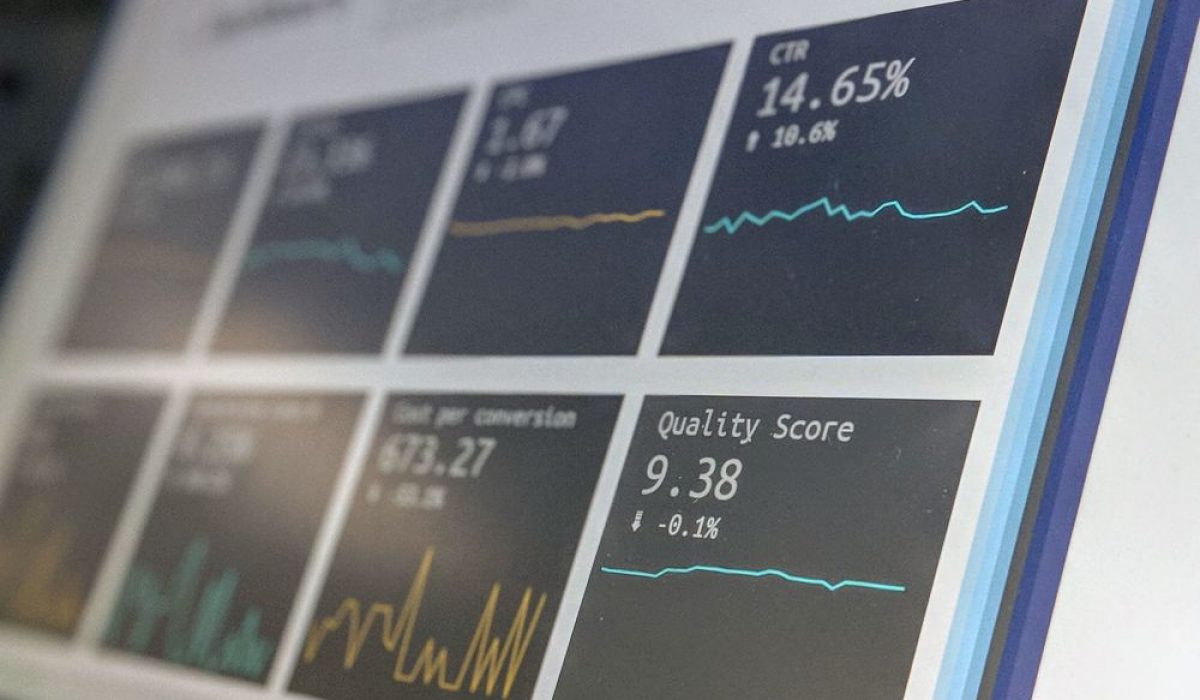Data-driven logistics businesses can optimize operations, reduce emissions and cut costs.
This theme – information services – focuses on the flow of data through the logistics value chain. Like oil in the 18th century, data today is an untapped yet immensely valuable resource.¹ To extract useful insights from crude data, it must be put into context. Individual pieces of data are rarely useful in isolation but when analyzed properly, they can coalesce into a source of insights for further action.
Companies should understand data sources – in particular, the logistics control towers and analytics described below – not as cost centers, but as future profit centers.
Information services is one of five themes that we believe will be central to the digitization of the logistics industry over the next decade. The other themes we examine arelogistics services, delivery capabilities, circular economy and shared logistics capabilities.
Logistics control towers
Augmented by the Internet of Things, the Web enables continuous automated monitoring of shipments, transportation assets, infrastructure, workers and customer requirements. The best examples to date of technology adding value to monitoring and control functions involve the centralization of those functions into ‘control towers’.
Typically, a control tower has three levels: process execution, analytics, and visibility and data integration. Control towers of this type have several advantages. The data gathered by the control tower can be organized in the cloud for monitoring and automation purposes, where it can be analyzed to detect and predict problems, and to optimize decision making. They also encourage the development of skilled personnel who can manage new technologies and continuously improve their value.
Control towers can deliver unmatched levels of transparency throughout the value chain, helping to optimize logistical operations, reduce emissions and increase levels of customer satisfaction.
Case study
Kuehne + Nagel
Kuehne + Nagel uses a logistics control tower to maximize cost efficiencies, while adhering to time constraints and complying with standards in security and document accuracy.² The Germany-based logistics giant has in excess of 1,000 offices across more than 100 countries.³ With more than 63,000 employees, it oversees networks that use many service providers and demand complex levels of organization covering border crossings, multiple regions and modes, and merge-in-transit and divert-in-transit operations. Its tower uses order and transportation management software to exchange data between carriers, service providers, and senders and receivers of goods.
Similar projects involving Unilever, P&G, Pfizer and Dell have reduced inventories in excess of US$500 million by 25 to 40%, lowered delivery costs by 10 to 20%, cut warranty costs by 12 to 25% and shrunk labor costs by 20 to 30%.⁴
Control towers provide real-time visibility of the entire supply chain, helping companies to increase response speed and reliability and reduce downtime, which could generate savings of $210 billion in operating costs for logistics companies through 2025. They could also reduce waiting times at major canals by around 25%, which could lead to additional cost savings of $20 billion to marine freight companies.
Analytics as a service
Businesses commonly apply analytics to describe, predict and improve performance. Within logistics, there are several areas that have already been shown to suit this kind of analysis.⁵

Case study
Weft
Startups such as Weft⁶ now offer easy ways to collect data at points along the delivery value chain via sensor-based technologies that can be attached to products or machinery. By analyzing this data alongside historical data for a container’s planned route, Weft can track shipping containers around the world in real time, to identify likely bottlenecks and shrinkage areas, alerting shippers to potential problems before they occur.⁷ At present, only a small proportion of the world’s 20 million shipping containers are tracked in this way, which means the potential savings through reducing cargo shrink and supply chain disruptions across the industry are enormous.
To achieve these cost reductions, companies must not only disseminate data internally but also exchange it with other industry stakeholders to ensure visibility all along the logistics value chain. Often, however, suppliers are reluctant to share data with customers, in case it is used against them in negotiations.
Looking to the wider community, analytics can have a major environmental impact. Network optimization can reduce the number of trucks on the road and increase last-mile delivery speeds – especially in cities – and thus lower emissions and waste production.
Analytics will help logistics companies reduce their operating costs. The largest beneficiary will be road freight companies, with an estimated $520 billion of potential savings in operating costs over the next decade. Lesser benefits would also accrue to air and marine freight companies, projected in the range of $30 billion and $50 billion in operating costs, respectively. Analytics also has huge societal benefits: we estimate that improved route optimization and capacity utilization could lead to a reduction in emissions of more than 4 billion metric tons.
Footnotes:
1. http://www.wired.com/2014/07/data-new-oil-digital-economy/
2. http://www.kn-portal.com/integrated_logistics/logistics_control_tower/
3. Kuehne + Nagel, “About us”, http://www.kn-portal.com/about_us/about_us/
4. Accenture Research Institute for Logistics, 2015
5. Accenture Research Institute for Logistics, 2015
6. http://startupprophet.com/p/weft-simple-cargo-tracking-for-businesses-1132
7. https://angel.co/weft
Read the next article in this theme
Logistics is one of six industries (along with automotive, consumer, electricity, healthcare and media) that have been the focus of the World Economic Forum’s Digital Transformation of Industries (DTI) 2016 project. An overview of the DTI program can be found here.
Our in-depth findings about the digital transformation of the logistics industry are available in a white paper, which can be downloaded here.
To explore a selection of related articles and case studies, please select one of the tags below.
Publicado originalmente en reports.weforum.org



